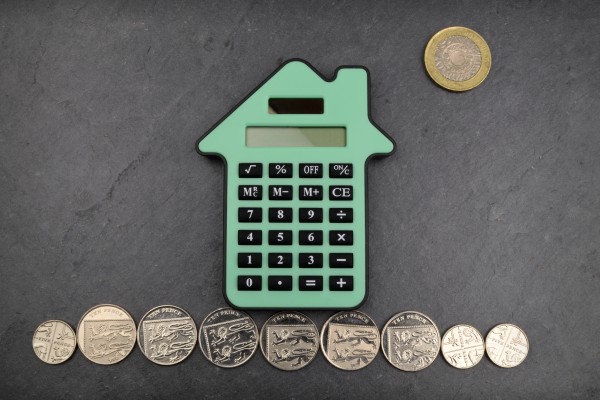
Rates, rates, and more rates. So much of our daily lives and economic well-being is underpinned by interest rates and their direction of travel. Interest rates directly influence the cost of borrowing, including the cost of mortgages. As interest rates and corresponding mortgage rates have risen over the past 6-12 months many landlords and property investors have seen their costs rise and margins squeezed. Despite this, evidence suggests that many landlords have been held back from passing the full brunt of costs onto tenants.
The Changing Landscape of Mortgage Rates
Letting agent Barrows and Forrester conducted research into the average monthly cost of a buy-to-let mortgage back in December 2021 – before interest rates had begun to rise. At the time, landlords could opt for a typical two-year fixed mortgage at a rate of around 2.9 percent per annum. With the average house price sitting at just over £268,000 at the time, the average buy-to-let property would cost landlords £942 per month on a full repayment mortgage or £486 per month on an interest-only mortgage.
In the intervening years, interest rates have risen from 0.1 percent to 4.25 percent. A typical two-year fixed mortgage is now closer to 4.5 percent, whilst house prices have risen further to over £289,000. As a result, the average British landlord now faces the prospect of monthly payments in the region of £1,133 for a repayment mortgage or interest-only payments of £703. That’s a 20.1% increase in the average monthly cost of a full monthly repayment, equating to £190 more per month, or a 44.6% increase in the average monthly interest-only repayment adding £217 more to the monthly cost.
Rents Not Raising in Line with Mortgage Rates
Despite significant increases in the cost of borrowing, it seems landlords are yet to increase rents in line with mortgage rates. Further research by Barrows and Forrester highlights that the average monthly cost of renting across the UK market has only increased by £124 per month to £1,184, equivalent to a rise of 11.7 percent from a value of £1,060 in December 2021. Even in London, where rents have increased at a more aggressive rate, they have failed to keep up with buy-to-let mortgage rates. Typical rents have increased by £227 per month over the period. In comparison, full repayment mortgages have increased by £297 per month and interest-only mortgages by £372 per month.
Why Rents are Behind Mortgage Rates
Whilst it would be great to attribute the limited rental increases to the goodwill of landlords, it is likely that there are a number of factors in play. First of all, many landlords will still be sheltered by longer-term fixed-rate mortgages, with their 2-year and 5-year fixed periods yet to expire. Those landlords who have found their mortgages transitioning onto a variable rate have perhaps been as likely to sell the properties than increase their rents, with a plethora of reports highlighting landlords who have opted to ‘sell up’ and leave the private rental sector. Equally, with years of rising house prices, many long-term landlords may find that they have enough equity in their properties and their mortgages are small enough that they don’t feel the full force of rising rates to the same degree. That is not to say that, there are not kind-hearted landlords and pragmatic property investors who see the value of long-term, good tenants and opt to shoulder some of the costs rather than passing them on during a cost-of-living crisis.

Will Rents Increase Due to Mortgage Rate Rises in Future?
Despite rents lagging mortgage rates over the past 12 months, it is highly likely that they will begin to increase more aggressively in the near future. As we continue through the year, more and more landlords will find their properties transitioning from their fixed-rate deals onto significantly inflated variable rates. Such landlords will face the choice of potentially operating the properties at a loss, selling up, or increasing rates. A betting person would probably put their money on one of the latter two options. Even if the majority of landlords opt to sell rather than increase rents, this would only further the chronic supply and demand imbalance in the UK’s private rental sector, organically forcing up rents as tenants bid up an ever-smaller pool of prospective rental properties. As such, it is more than likely that rental growth will begin to outpace rising interest rates in the coming year, with Savills estimating that rates will rise between 6.5 percent and 4 percent per annum through 2023 and 2024.
“As it stands, the nation’s landlords are yet to hand down the far higher cost of borrowing to their tenants and while rents have climbed of late, they haven’t increased at the same rate as the monthly cost of a mortgage.
“This is partly due to the fact that many landlords will have secured a favourable rate on a fixed product before interest rates started to climb. But those that managed to do so are likely to be approaching the end of their fixed term this year and will be hit with far higher rates when they do.
“Many landlords opt to pay an interest only payment to service their loan while benefiting from the rental income and the capital appreciation of their portfolio. So whether they are entering the market now, or looking to lock in a new rate for a fixed period, their monthly cost is going to have increased considerably.
“Unfortunately for the nation’s tenants, they are left with little choice but to recoup this higher cost via an increase in rents and so we expect to see sharp upward growth in the average cost of renting as the year progresses.”
James Forrester – Managing Director of Barrow and Forrester
For those landlords contemplating increasing their rents, Landlord Vision has a selection of great guides on how best to do so:



